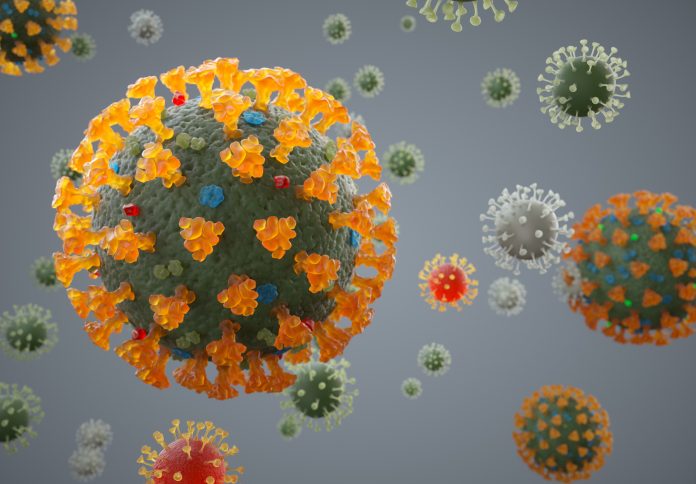
Scientists at Sanford Burnham Prebys have identified a set of human genes that fight SARS-CoV-2 infection, the virus that causes COVID-19. The researchers identified 65 interferon-stimulated genes (ISGs) that act to dampen the infection.
The study was published in the journal Molecular Cell.
One of the central questions about COVID-19 infection has been why certain people have no, or almost no, symptoms while others become seriously ill, requiring ICU care, experiencing ongoing symptoms, or dying.
Several studies have spotlighted genes that may influence an individual’s response to the disease. One of the largest to date is the GenOMICC (Genetics of Mortality in Critical Care) study, which in December 2020 reported on sequencing results from more than 2,200 patients in over 200 UK intensive care units.
These researchers’ analysis showed low expression of IFNAR2, or high expression of TYK2, are associated with life-threatening disease. Also, transcriptome-wide association in lung tissue revealed that high expression of the monocyte–macrophage chemotactic receptor CCR2 is associated with severe COVID-19. These are genes associated with host antiviral defense mechanisms and mediators of inflammatory organ damage in COVID-19. “Both mechanisms may be amenable to targeted treatment with existing drugs,” those authors wrote.
Other research has pointed to the ABO blood group and ApoE4 as being factors in severity of COVID-19 infections.
The Sanford Burnham Prebys study was also aimed at finding susceptibility or protective genes, with the ultimate aim of understanding what treatments might be useful.
“We wanted to gain a better understanding of the cellular response to SARS-CoV-2, including what drives a strong or weak response to infection,” says Sumit K. Chanda, PhD, professor and director of the Immunity and Pathogenesis Program at Sanford Burnham Prebys and lead author of the study. “We’ve gained new insights into how the virus exploits the human cells it invades, but we are still searching for its Achille’s heel so that we can develop optimal antivirals.”
The researchers point out that soon after the start of the pandemic, clinicians found that a weak interferon response to SARS-CoV-2 infection resulted in some of the more severe cases of COVID-19. This insight led Chanda and his collaborators to search for the human genes triggered by interferons, known as interferon-stimulated genes (ISGs), which act to limit SARS-CoV-2 infection.
Based on further insights gleaned from studies of SARS-CoV-1, the virus that caused a deadly, but relatively brief, outbreak of disease from 2002 to 2004, and knowing that it was similar to SARS-CoV-2, the investigators developed laboratory experiments to identify the ISGs that control viral replication in COVID-19.
“We found that 65 ISGs controlled SARS-CoV-2 infection, including some that inhibited the virus’ ability to enter cells, some that suppressed manufacture of the RNA that is the virus’s lifeblood, and a cluster of genes that inhibited assembly of the virus,” says Chanda. “What was also of great interest was the fact that some of the ISGs exhibited control across unrelated viruses, such as seasonal flu, West Nile and HIV, which leads to AIDS”.
“We identified eight ISGs that inhibited both SARS-CoV-1 and CoV-2 replication in the subcellular compartment responsible for protein packaging, suggesting this vulnerable site could be exploited to clear viral infection,” says Laura Martin-Sancho, PhD, a senior postdoctoral associate in the Chanda lab and first author of this study. “This is important information, but we still need to learn more about the biology of the virus and investigate if genetic variability within these ISGs correlates with COVID-19 severity.”
As a next step, the researchers will look at the biology of SARS-CoV-2 variants that continue to evolve and threaten vaccine efficacy. Martin-Sancho notes that they have already started gathering variants for laboratory investigation.













